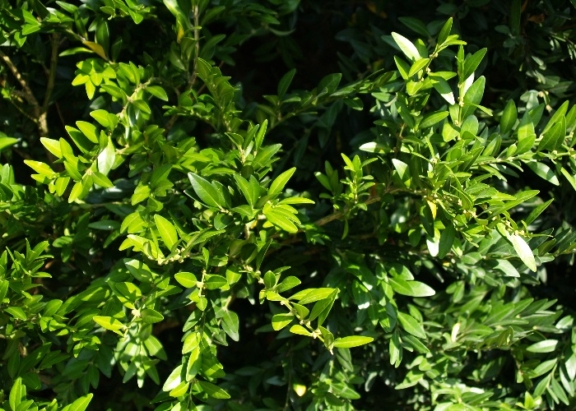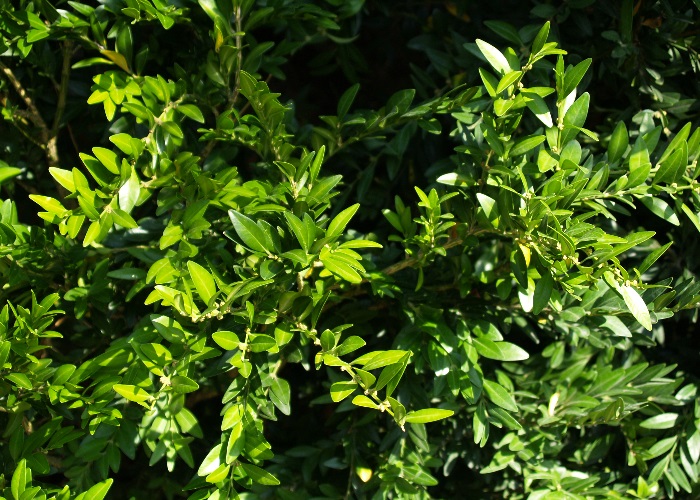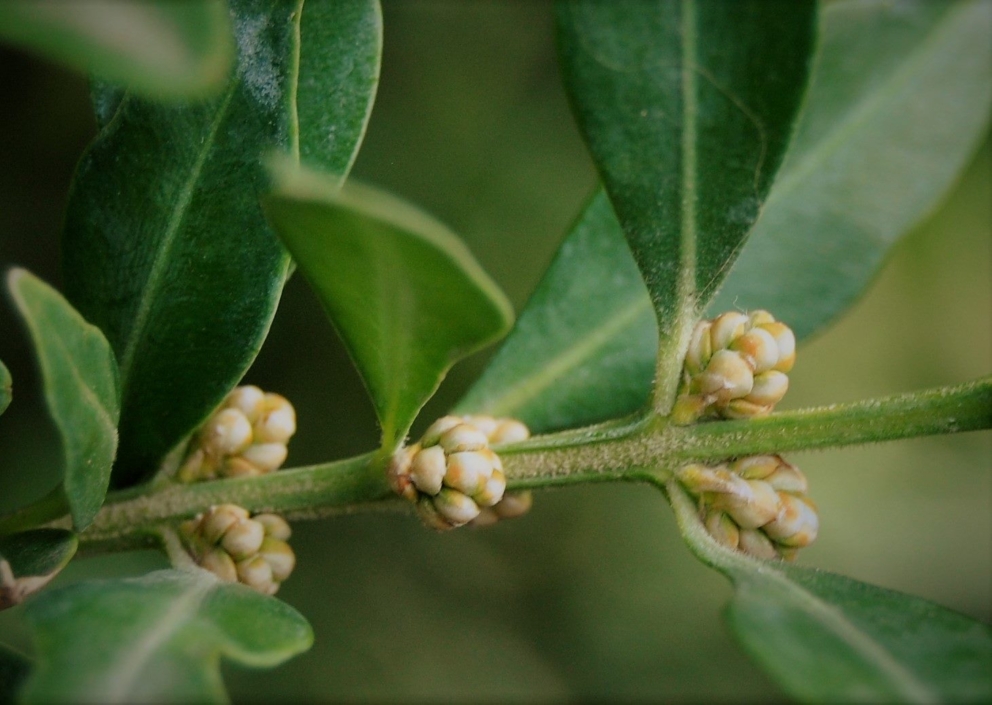
Boxwood
Buxus sempervirens
Family and description
Boxwood is an evergreen shrub belonging to the Buxaceae family that can reach a height of 5 metres. It has a narrow, highly branched shape, with hairy branches that are green when young and turn yellowish later on.
The leaves are ovate, oblong or elliptical, with a revolute margin and a short petiole, leathery, yellow to green, glabrous and about 1 to 3 cm long.
The small, yellow flowers appear between January and May. Positioned at the end of the branches, the 5-6 male flowers have no peduncle, sit directly on the branches, and are positioned below the female flowers. The bracteoles are ovate and acute.
The fruit, a capsule, ripens in autumn. It is dry and has a subglobose to oblong shape, a brown or grey colour and straight stipes. The seeds are hard, black and shiny.
Origin and habitat
Native to central, western and south-western Europe, where it occurs in woodland in mountainous regions or riparian underwood areas.
It tolerates dryness and direct sunlight. It favours basic, stony and well-drained soils. In Portugal, the species appears most frequently between 25 and 470 metres above sea level and at a distance of between 30 and 180 kilometres from the sea.
Uses and curiosities
Toxic species – all parts of the plant are toxic because of the alkaloids they contain.
Due to its beauty, perennial nature and tolerance to pruning, it is widely used for ornamental purposes and is often found in the composition of hedges and topiary. The compact, heavy wood is used in joinery. The branches are used by florists.
Propagated by seed.


